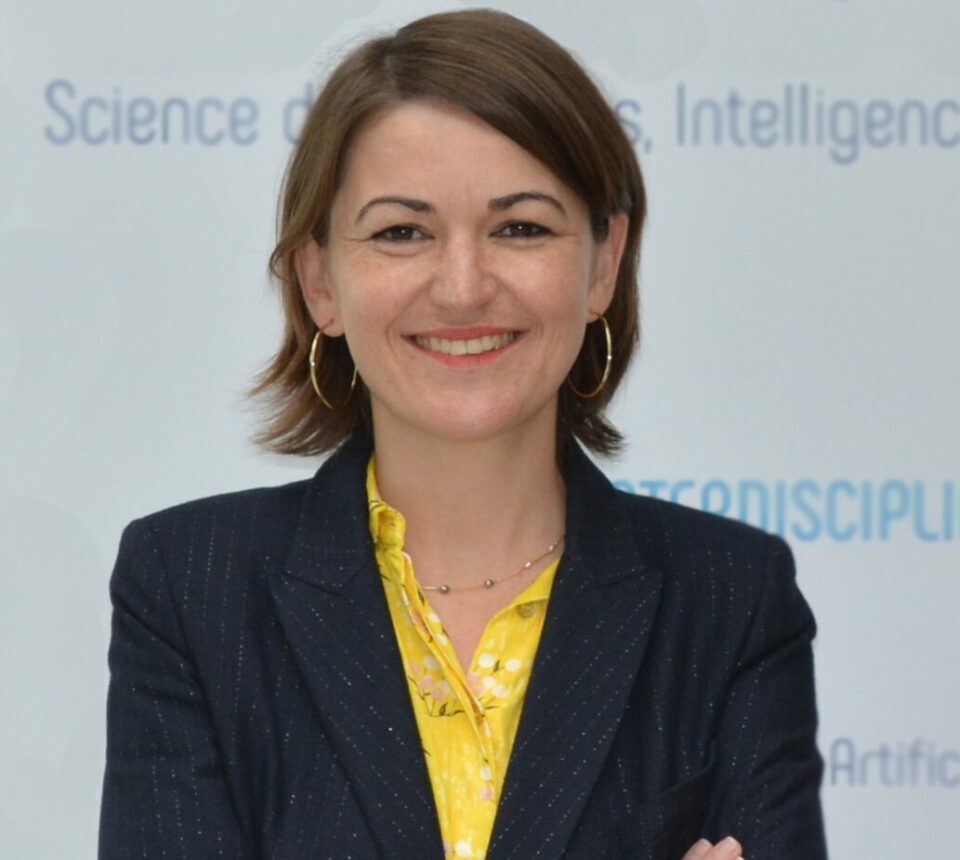Julie Josse, the statistical missing link
Inria researcher, statistician Julie Josse has joined theDesbrest Institute of Epidemiology and Public Health (IDESP) in January 2021. For almost ten years, this specialist in missing data has been applying statistical power to the field of health.

At first sight, it's hard to make the connection between head trauma care and statistical research. But since 2013, statistician Julie Josse has been working with intensive care physicians to improve the treatment of polytrauma patients. " From the moment the fire department arrives until the patient is taken into hospital, there is a significant loss of information and decision-making errors. The aim of the TrauMatrix project is to establish a typology of accident victims, so that first aid can be better directed ", explains the researcher.
Missing data
Statistical processing of the data collected by the thirty Trauma Centers involved in this project makes it possible to identify typical patient profiles based on the medical information recorded by the emergency services (blood pressure, heart rate, etc.). Prior to statistical processing, Julie Josse also assists doctors with data collection: " For statistical work to be useful, you need to know the field of application. Her speciality, missing data in statistical analysis, is indispensable here, as information is often missing, either because it was forgotten in an emergency, or because the patient's condition did not allow certain examinations to be carried out.
Another challenge for this project is to evaluate the effectiveness of treatments for head trauma. With serious accidents, clinical studies are very difficult to set up, primarily because patient consent is often impossible. In such cases, statistical analysis is a means of evaluation, thanks to the method of causal inference. " This method makes it possible to understand, between different treatments, whether the differences observed are actually due to the different treatments and not to other variables. We therefore need to disentangle the effects ", explains the scientist. She gives a telling example, that of hydroxychloroquine: " The causal inference method has, for example, shown that the positive effects on people treated with hydroxychloroquine in hospital were linked to the youth of the patients treated and not to the efficacy of the drug administered."
Silicon Valley
Applied to many fields, causal inference is very much in vogue. Julie Josse put her knowledge to good use on the Google brain team in 2016: " A little bubble where researchers have all the means at their disposal to conduct fundamental research. " It's not the first time the young researcher has met the scientific elite. Before joining Inria in 2020, she spent 18 months at Stanford University between 2013 and 2016, then was a professor at Polytechnique between 2016 and 2020. Two very different experiences of scientific excellence: " the American conviviality of Silicon Valley versus the austerity of the French school ".
Julie Josse's degree in applied mathematics from Brest had not predestined her for this prestigious career. As a mathematician, she preferred the precision of demonstrations to the vagaries of statistics. The randomness of her student orientation eventually led her to a Master's degree in applied statistics, followed by a position as a statistical engineer at Agrocampus in 2007. There, her initial work on the statistical processing of sensory studies sealed her taste for the discipline. She then embarked on a PhD on the statistical management of missing data, for which she was awarded the prize for best thesis in 2010.
" The academic world of statistics is very open ".
His involvement in the statistical scientific community around open access and knowledge sharing has opened doors for him. " The academic world of statistics is very open, as demonstrated by the R project for example, which enables researchers to make their statistical processing programs freely available online ", explains the woman who was elected to the R software foundation following her contributions. In 2009, as a PhD student, she organized a meeting of this community in Rennes, under the dubious eye of certain colleagues who had difficulty seeing how the PhD student was going to rally the world of statistical research. " However, some major international statisticians came, in particular Trevo Hastie from Stanford University. A meeting that earned me an invitation there!"
Her encounters with people and the originality of her research into missing data don't explain everything. Julie Josse's career path is also impressive for her ability to systematically carry out two jobs at once: engineer and doctoral student for three years, teacher-researcher at Agrocampus with an additional part-time job in Silicon Valley for the following three years, then professor at Polytechnique while participating in Google Brain. And during the containment of the Covid epidemic, she teamed up with emergency physicians to create an application for real-time information on hospital bed availability ( Icubam project).
With Muse funding to set up her team, Julie Josse now joins the Institut Desbrest d'Epidémiologie et de Santé Publique (IDESP) to strengthen statistical research in health, with a particular focus on allergies. Her Inria-Inserm team, entitled PreMeDICaL (precision medicine by data integration and causal learning), aims to improve patient care by combining clinical expertise with the wealth of multi-source data.
